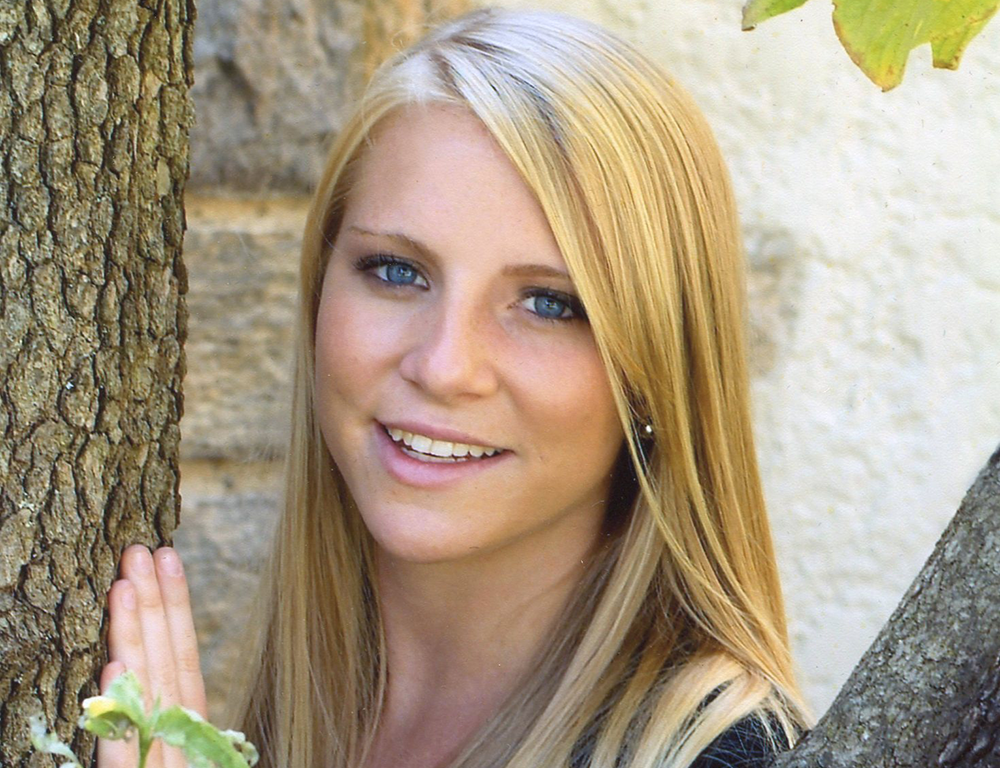
In May 2012, gliomatosis cerebri claimed the life of 21-year-old college sophomore Elizabeth Minter. Gliomatosis cerebri is a rare and inoperable brain tumor that strikes children and young adults, and the prognosis is usually very poor. Here are Elizabeth's own words about the events leading up to her diagnosis:
"In the summer of 2010, I was a typical 19-year-old. I was between my freshman and sophomore years at Denison University and I spent the summer babysitting. I was always exhausted, which I attributed to the challenge of caring for small kids. That fall I returned to school, where my major dilemma was whether to major in communications or biology. I wanted to be a nurse, but enjoyed my communications courses more than biology. I was also contemplating a Junior Year Abroad program in Australia or Italy.
"As the semester progressed I became more fatigued. I opted to go to bed Friday and Saturday nights instead of socializing with my friends and sorority sisters. When I returned to school after Thanksgiving break, I started vomiting when waking in the morning. I went to the infirmary at school; they gave me some antinausea medication, but that didn’t really work. Somehow I made it through exams!
"I returned home for the Christmas holiday on December 20, and my parents could see that something was wrong. They scheduled a complete physical for December 27. My blood work was all fine, so a CAT scan was performed on my brain December 30. I was feeling better that afternoon, knowing that the doctors were determined to find out what was wrong.
"I was getting a manicure when my doctor called and said that the CAT scan was not normal and that we should go to NewYork-Presbyterian Hospital’s emergency room for an MRI. Late that night, a doctor came into my hospital room to tell me and my parents that I have a rare, inoperable brain cancer."
Right now, families who hear a diagnosis of gliomatosis cerebri have little reason for hope — survival rates have not improved in decades, mostly because there is very little funding available for new research. Gliomatosis cerebri and several other pediatric brain tumors are simply too rare, and the majority of funding goes to more common cancers. Elizabeth understood her diagnosis, and she wanted a way to create that hope.
Elizabeth's neurosurgeon, Dr. Jeffrey Greenfield, is also a researcher, and he is determined to find new solutions to these inoperable tumors. And so together Dr. Greenfield, Elizabeth, and her family decided to create hope: Elizabeth's Hope. Elizabeth's Hope, now in its second year, is a fund-raising campaign that supports Dr. Greenfield and the Children's Brain Tumor Project of Weill Cornell Medicine Pediatric Neurosurgery. (Read more about the Children’s Brain Tumor Project.)
Watch a video tribute to Elizabeth's Hope:
Elizabeth's tumor was the first gliomatosis cerebri to be genetically sequenced — the Children's Brain Tumor Project has since then sequenced other GC tumors and created a tissue bank where samples can be studied, sequenced, and understood. Dr. Greenfield is hopeful that his work on genetic sequencing will help contribute to a new era of personalized medicine, an era in which an individual tumor can be examined and the best cancer-fighting drugs identified for it.
Find out more about Elizabeth's Hope | Make a Donation to Support the Children’s Brain Tumor Project